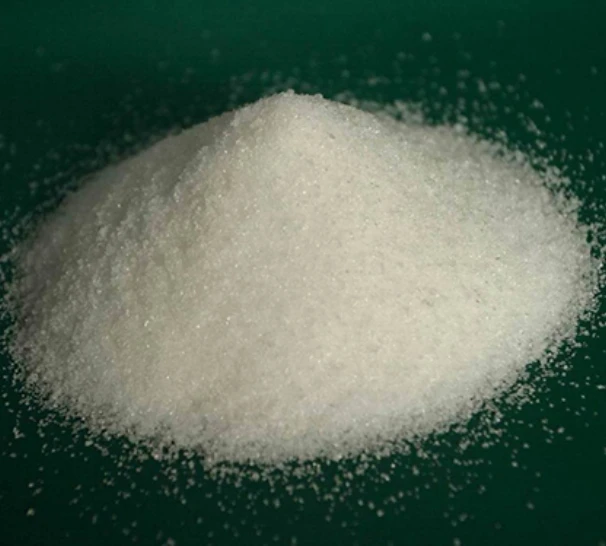acrylic homopolymer
Understanding Acrylic Homopolymers Properties, Applications, and Advantages
Acrylic homopolymers represent a significant class of synthetic polymers that are derived primarily from acrylic acid or its derivatives. These versatile materials are renowned for their impressive range of properties and applications, making them pivotal in various industries. This article delves into the fundamental aspects of acrylic homopolymers, including their synthesis, characteristics, applications, and advantages.
What are Acrylic Homopolymers?
Acrylic homopolymers are formed when a single type of monomer, typically an acrylic monomer, undergoes polymerization. The most common monomers used in this process include methyl methacrylate (MMA), ethyl acrylate, and butyl acrylate. The polymerization can occur through different methods, such as radical polymerization, emulsion polymerization, or suspension polymerization, predominantly yielding a clear, colorless solid or a viscous liquid, depending on the specific formulation.
Properties of Acrylic Homopolymers
Acrylic homopolymers exhibit a unique set of physical and chemical properties that contribute to their widespread use
1. Transparency One of the most notable characteristics of acrylic homopolymers is their outstanding clarity and transparency. This property makes them ideal for applications requiring high optical clarity, such as lenses and windows.
2. Weather Resistance These polymers possess superior resistance to UV radiation and environmental degradation compared to many other types of plastics. This feature allows them to maintain their mechanical and aesthetic properties over extended periods of exposure to outdoor conditions.
3. Lightweight Acrylic homopolymers are significantly lighter than glass yet offer similar levels of transparency and toughness, making them a popular choice in areas where weight reduction is critical.
4. Excellent Adhesive Properties Their ability to adhere well to various surfaces makes acrylic homopolymers widely used in adhesives, sealants, and coatings.
5. Flexibility and Impact Resistance Many acrylic homopolymers can exhibit a degree of flexibility, enhancing their durability and making them resistant to impacts and shattering.
Applications of Acrylic Homopolymers
The versatility of acrylic homopolymers allows for a broad spectrum of applications across various fields
acrylic homopolymer

1. Automotive Industry Acrylics are extensively used in the automotive sector for applications such as light covers, dashboards, and window panes due to their lightweight nature and weather resistance.
2. Construction In construction, acrylic homopolymers find use in paints, coatings, and sealants, providing protection against weathering and improving aesthetic finishes.
3. Medical Devices Their biocompatibility and clarity make them suitable for manufacturing medical devices and packaging, including syringes and drug delivery systems.
4. Signage and Displays Acrylic homopolymers are favored for signage and display applications due to their ability to be easily fabricated and formed, along with their long-term weatherability.
5. Optics The exceptional optical clarity of acrylics has led to their usage in production of lenses, light covers, and even optical fibers.
Advantages of Acrylic Homopolymers
The advantages inherent in acrylic homopolymers further bolster their appeal
1. Cost-Effectiveness Comparatively, acrylic homopolymers are often less expensive than alternatives such as polycarbonate or glass while providing similar or superior performance.
2. Ease of Fabrication Acrylics can be easily molded, cut, and shaped, allowing for rapid manufacturing processes and customization.
3. Environmentally Stable Acrylic homopolymers are resistant to chemical degradation, making them suitable for a variety of corrosive environments.
4. Recyclability Many acrylic materials can be recycled, contributing to sustainability initiatives within industries that prioritize environmentally friendly practices.
Conclusion
Acrylic homopolymers stand as a testament to the advancements in polymer chemistry, offering a unique balance of performance, versatility, and cost-effectiveness. As industries continue to innovate and demand materials that meet their stringent requirements, acrylic homopolymers are poised to play an increasingly significant role in future applications. Whether in automotive, construction, healthcare, or consumer goods, the reliable performance of acrylic homopolymers reinforces their importance in modern manufacturing and everyday life. As research and technology progress, we can anticipate even more groundbreaking applications and improvements in this dynamic field.
-
lk-319-special-scale-and-corrosion-inhibitor-for-steel-plants-advanced-solutions-for-industrial-water-systemsNewsAug.22,2025
-
flocculant-water-treatment-essential-chemical-solutions-for-purification-processesNewsAug.22,2025
-
isothiazolinones-versatile-microbial-control-agents-for-industrial-and-consumer-applicationsNewsAug.22,2025
-
scale-inhibitor-key-solutions-for-water-system-scale-preventionNewsAug.22,2025
-
organophosphonates-versatile-scale-inhibitors-for-industrial-water-systemsNewsAug.22,2025
-
scale-and-corrosion-inhibitor-essential-chemical-solutions-for-water-system-maintenanceNewsAug.22,2025





